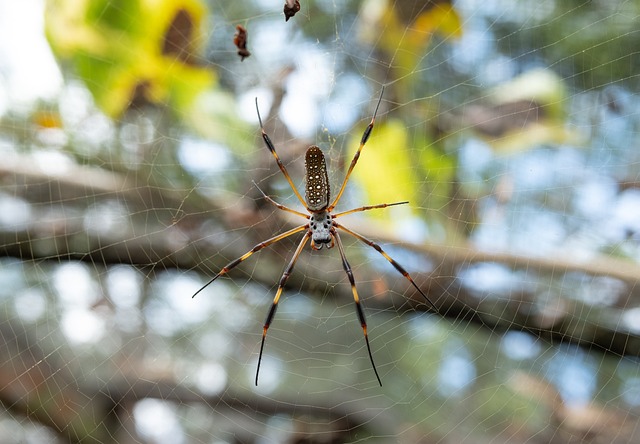The Chemistry of Spider Silk – a natural phenomenon that has baffled scientists for generations.
Think of Halloween and you tend to think of colourful falling leaves of autumn, ghosts and ghouls, even pumpkin spice lattes (I can’t vouch for this one).
One thing you might not think of, however, is the introduction of eight-legged house guests, looking for somewhere warmer for the winter.
Whether you jump at the sight of a scuttling spider or marvel at the intricacy of a dew-dropped web, the chemistry of spider silk has flummoxed the minds of scientists for many years.
Spider silk is predominantly a protein fibre, made up of two principal components: alanine and glycine.
Glycine gives the silk its elastic quality, whereas the alanine bonds with hydrogen, giving the silk its well-known strength.
So fascinating is the biochemistry behind a spiders web, that scientists have tried repeatedly to emulate its strength and elasticity. There have been mixed results, and no one has yet produced a faux spider silk on a large scale that we can put to good use.
What work has been carried out previously to discover the chemistry of spider silk?
According to Elsevier, three main attempts have been made:
- One involved using bacteria to create similar proteins to those found in the silk.
- An American study genetically modified goats to produce the required proteins in their milk.
- A study in the UK made artificial spider silk with silica- and cellulose-based fibres and water.
However, none of these have managed to fully emulated the strength or stretchiness of the real thing when studying the chemistry of spider silk.
A contagious breakthrough?
More recently, Fuzhong Zhang, a chemical engineer at Washington University (US) carried out research using bacteria. Binding spider DNA (specifically the Golden Orb Weaver – AKA the banana spider) with E.Coli bacteria, they were able to create a powdered polymer which, when dissolved in a solution and pushed through a fine hole, mimicked spider silk.
Young-Shin Jun, another chemical engineer at Washington University, used X-ray diffraction to explain the structure. This technique beams super-short wavelengths of light into a crystal to image the arrangement of it atoms in a crystal.
What she saw confirmed the fibres’ tough structure. Natural spider silk can have up to 96 repeating nanocrystals. The E. coli produced a protein polymer having 128 repeating nanocrystals. It was similar to the amyloid structure found in natural spider silk but even stronger. Longer polymers, with more interconnected parts, tend to create a fibre that’s more difficult to bend or break.
In other words, the structure of the synthetic “silk” was stronger than spider silk itself!
The scientists found that the main issue previously had been creating fibres with enough nanocrystals to produce the silk, and that the workings of a spider’s silk glands were delicate and very difficult to reproduce.
 A golden orb weaver, also known as a “banana spider”: Scientists used DNA from this species to teach bacteria to make super-strong silk threads.
A golden orb weaver, also known as a “banana spider”: Scientists used DNA from this species to teach bacteria to make super-strong silk threads.
While this is encouraging for science and may open up a whole world of uses for synthetic spider silk such as artificial ligaments, surgical sutures, and cell scaffolds for tissue repair, there is still a long way to go on the research.
The next step is finding enough bacteria to produce more protein and make the polymers on a larger scale. Furthermore, any new protein designs could have properties useful in multiple fields.
It will certainly be interesting to see where the research leads next!
Keep reading!
If you’d like to see some of our previous spooktakular Halloween chemistry blogs with loads of STEM activities (and our amazing pumpkin carving skills) then click HERE for a browse. Thanks for visiting!
Sources: https://scitechconnect.elsevier.com/chemistry-of-spiderwebs/ https://www.snexplores.org/article/innovation-bacteria-spider-silk-stronger-steel-chemistry-engineering





